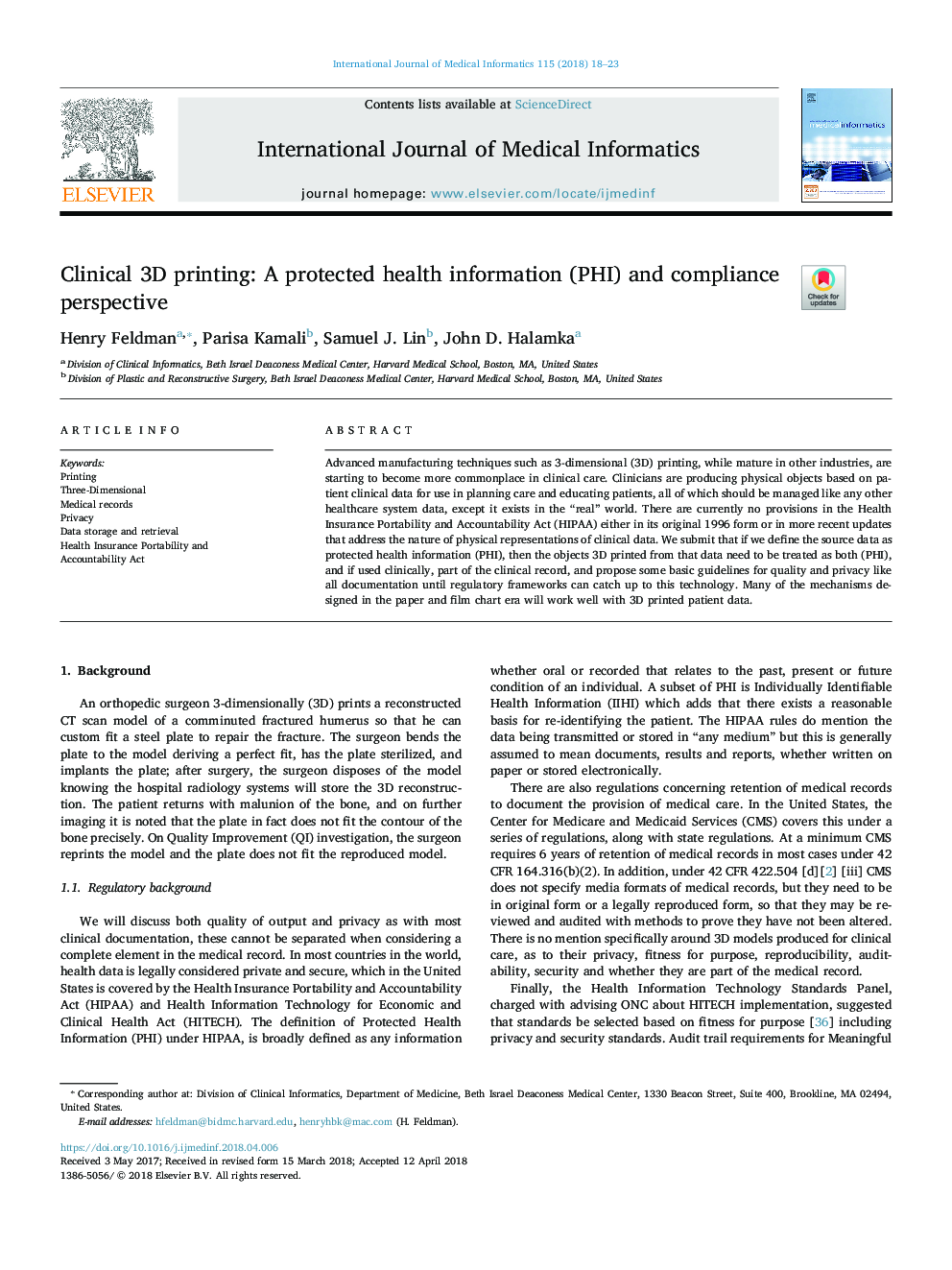| Article ID | Journal | Published Year | Pages | File Type |
|---|---|---|---|---|
| 6926188 | International Journal of Medical Informatics | 2018 | 6 Pages |
Abstract
Advanced manufacturing techniques such as 3-dimensional (3D) printing, while mature in other industries, are starting to become more commonplace in clinical care. Clinicians are producing physical objects based on patient clinical data for use in planning care and educating patients, all of which should be managed like any other healthcare system data, except it exists in the “real” world. There are currently no provisions in the Health Insurance Portability and Accountability Act (HIPAA) either in its original 1996 form or in more recent updates that address the nature of physical representations of clinical data. We submit that if we define the source data as protected health information (PHI), then the objects 3D printed from that data need to be treated as both (PHI), and if used clinically, part of the clinical record, and propose some basic guidelines for quality and privacy like all documentation until regulatory frameworks can catch up to this technology. Many of the mechanisms designed in the paper and film chart era will work well with 3D printed patient data.
Keywords
Related Topics
Physical Sciences and Engineering
Computer Science
Computer Science Applications
Authors
Henry Feldman, Parisa Kamali, Samuel J. Lin, John D. Halamka,
